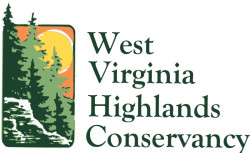A Brief History of Our Highway Opposition and Corridor H
The first proposal to be fended off was the Allegheny Parkway (patterned by its boosters after the Blue Ridge Parkway), which would have followed the highest peaks and connected Spruce Knob with Dolly Sods. The second idea was the Highland Scenic Highway, a portion of which was actually built in Pocahontas County between the Cranberry Visitor Center and US Route 219 north of Edray. The third scheme, the infamous Appalachian Corridor H, was designed to link I-79 at Weston with I-66 in Virginia.
All three had their boosters, attracted massive opposition, and ultimately were scaled back or even stopped before the first spade of dirt was turned. But by far the longest struggle has been against Appalachian Corridor H.
An east-west four-lane highway across north central West Virginia had been a dream of developers before President Kennedy’s Appalachian Regional Commission put it on their map. Yet the basic fact remained that it was impossible to select a route for a major highway that would not endanger numerous trout streams, interfere with wilderness areas, or cut through historic battlefields.
The controversy surrounding Corridor H has pulsed off and on for more than forty years. In the 1970’s, the West Virginia Department of Transportation conducted an early Environmental Impact Statement (EIS). The Conservancy challenged the assumption that there were any feasible alternatives. Plans lingered until 1990. When Senator Robert Byrd became chair of the Appropriations Committee, the possibility of Congressional funding rekindled the idea of the four-lane and a Supplemental EIS was issued. Another decade of debate concluded with legal action by fourteen groups led by West Virginia Highlands Conservancy and Corridor H Alternatives. The lawsuit challenged the Federal Highway Administration’s Record of Decision that would allow destruction and disruption of communities and important natural and historical areas along the route.
Victory on appeal led to court-mandated mediation. A settlement agreement signed by all parties in 2000 defined specific requirements for individual sections of the road, including further studies to seek the least damaging ways around important resources such as Corricks Ford Battlefield on the Shavers Fork, Blackwater Canyon, and Greenland Gap. Forty percent of the proposed route was changed as a result of the agreement; construction was delayed by as much as twenty years. The Highlands Conservancy and other plaintiffs reserved the right to sue if the highway departments reverted to their original alignment across Blackwater Canyon.
The West Virginia Highlands Conservancy continues to monitor compliance with the settlement agreement, and continues to work to keep such massive highway projects from destroying and fragmenting our highlands.
